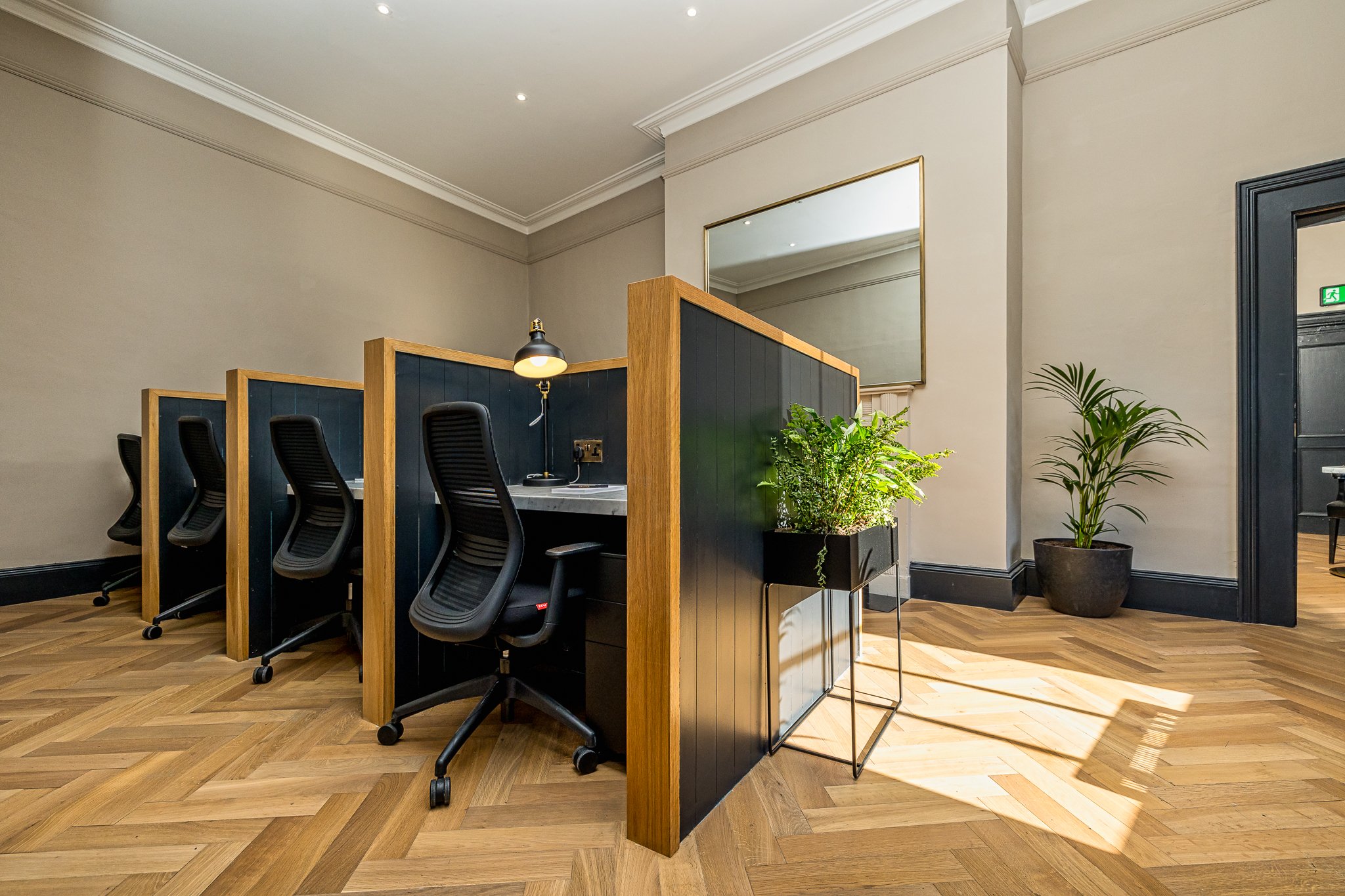Traditional Office or Flexible Workspace: Which is Better for Your Business
Just like house hunting, searching for a new office can be stressful. After all, you’re looking for a home for your business and your team, and there’s a lot to consider before signing a lease: which location is the most convenient for your employees’ commute? Do you need more meeting space or desk space? Should you go for a historic or modern feel?
And perhaps one of the most crucial decisions…do you opt for a traditional office lease or embrace the flexibility offered by coworking and flexible workspaces?
Whether you go traditional or flexible, each workspace option comes with its own set of advantages and drawbacks. Before you start viewing offices, it’s important you carefully consider the needs and priorities of your business. If you’re already feeling overwhelmed, don’t worry. In this blog, we’ll compare and contrast traditional offices with flexible workspaces, helping you to determine which is the best option for your business and future growth!
Cost
When searching for new office space, budget will likely be your top-of-mind consideration. You may already have a figure in mind, but before you go office hunting, understanding pricing structures of both traditional and flexible workspaces is key to finding the best solution for your business.
Traditional office leases typically require businesses to sign long-term contracts and commit to fixed monthly rental payments. At first glance, you might find the cost per square footage is lower in traditional offices than in flexible workspaces – but you’ll need to account for furnishings like desks, chairs, peds, and meeting room furniture, plus utilities, maintenance, and insurance as well.
On the other hand, flexible workspaces usually offer an all-inclusive monthly rate, which includes the cost of the workspace, along with furnishings, utilities, maintenance, IT, in-house amenities, and property rates. Knowing the flat figure you’re responsible for each month can help you better forecast your finances. Some flexible workspace providers will work with you on a pay-as-you-go model, which can mean big cost savings for start-ups and small businesses with limited budgets.
Lease Terms
Depending on what stage of growth your business is at, you’ll want to think about different lease terms next. Consider what your growth and hiring plans are, as well as potential market downturns or stagnation, so you can opt for a lease term length that meets your needs in the months and years to come.
Traditional office leases come with longer lease terms, often ranging from three to ten years or more. This long-term commitment can provide stability and security to some businesses, but it can also limit your flexibility and make it more difficult to pivot depending on your changing business needs.
Alternatively, flexible workspaces offer shorter lease terms. Most providers will offer lease terms of three months to three years, with options to renew if you find you love where you’re at. This flexibility will allow you to scale up or down as needed, without being locked into a long-term contract.
Amenities
Today’s workforce expects a certain level of comfort and care and being able to provide high-end amenities can make or break your hiring efforts.
In a traditional office, you’ll typically be expected to manage and maintain your own facilities, including office furniture, equipment, and common areas. This might mean making an additional hire for an Office Manager who can look after everything from stocking the kitchens to navigating maintenance requirements.
In contrast, flexible workspaces often provide a wide range of on-site amenities and services, including fully furnished office spaces, high-speed internet, meeting rooms, F&B services, and on-site support staff. Depending on your budget, some providers go above and beyond to offer elements like wellness rooms, a continental breakfast offering, and complimentary toiletries, to name a few. These amenities can help you save time and money by eliminating the need to purchase and manage your own infrastructure – allowing you to focus on growing your business.
Culture
Culture is that hard-to-define aspect of the workday that seems to have an impact on everything from productivity to morale. While your management style and business operations play a large role in your business’s culture, your working environment will also contribute in a big way.
Some businesses may prefer a more formal and structured atmosphere, making a traditional office with more limited opportunities for networking and collaboration outside of your business the better choice.
Other organisations, however, may benefit from a flexible workspace’s sense of community. From networking events to simply chatting over a cup of tea in the communal kitchen, flexible workspaces encourage interaction and idea sharing among members. Having a built-in network can be invaluable to startups, freelancers, and remote workers.
While traditional offices offer stability and control, flexible workspaces provide an excellent cost-effective, serviced solution with a vibrant community atmosphere.
The most important factor in choosing between a traditional office and flexible workspace? What your business needs to succeed. Your business is unique, and you know it best. By carefully considering how you and your team work best, you can determine which working environment will support your success for years to come.
Ready to make a move? Chat with our sales team to figure out how Grafter can support your success, however you work best.




